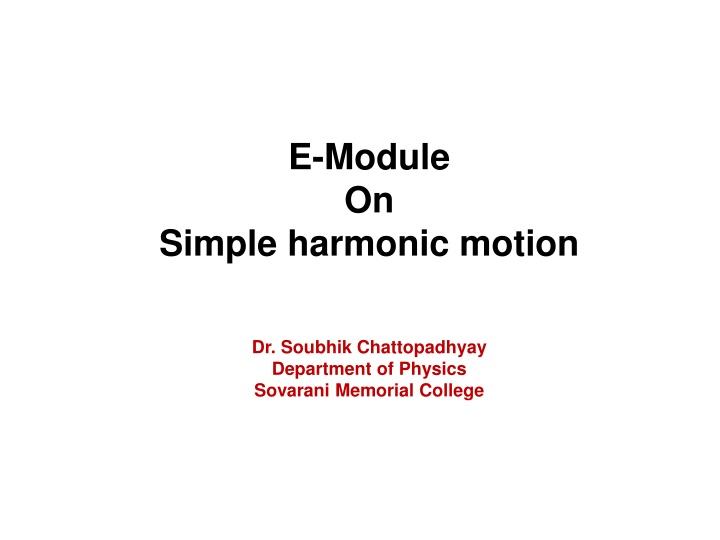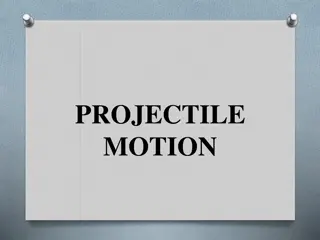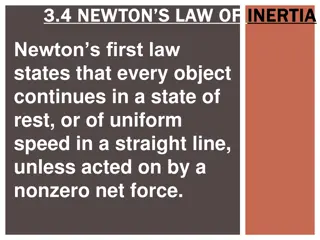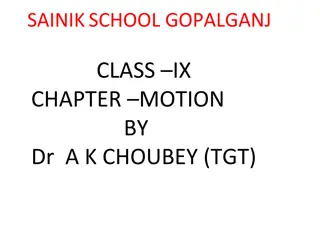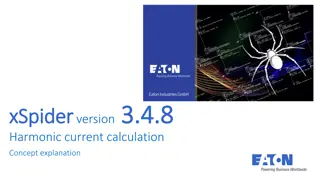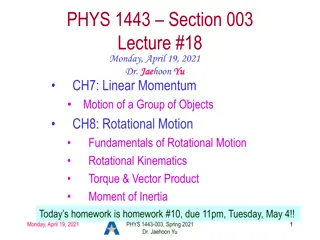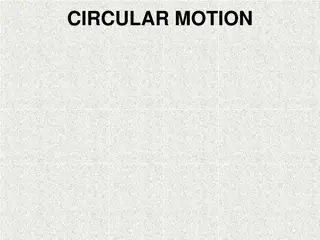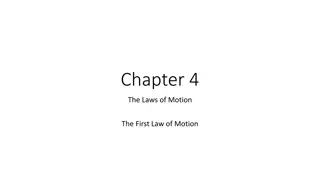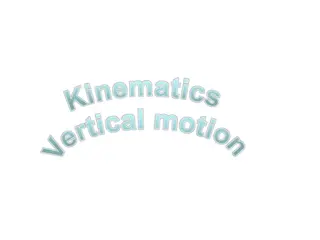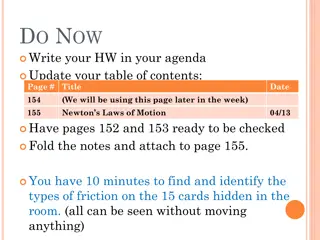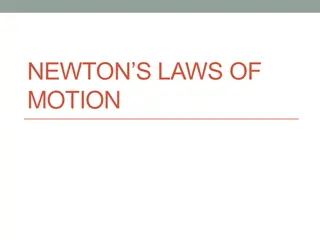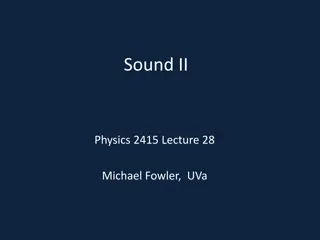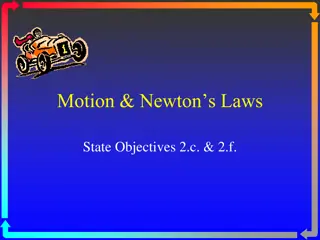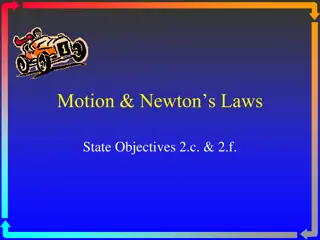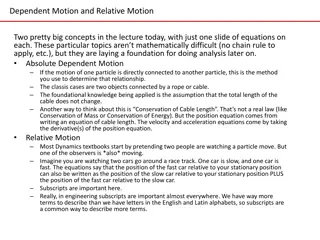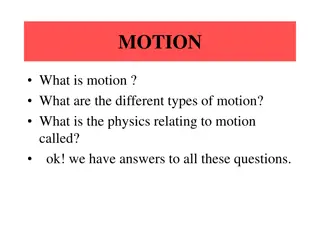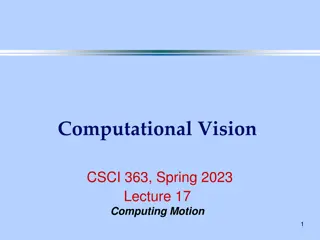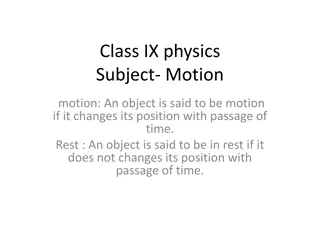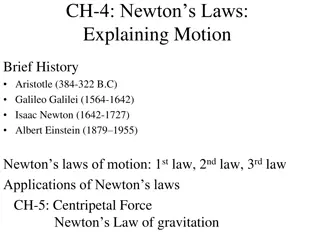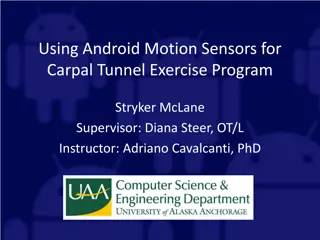E-Module On Simple harmonic motion
Definition and examples of periodic motion, relationship between uniform circular motion and SHM, analysis in terms of potential and kinetic energy, effects of damping and resonance, and problem-solving techniques. Challenges in teaching SHM include the need for knowledge in radians, trigonometry, and differentiation. A brief history of SHM and its applications in various fields are also discussed.
Uploaded on Mar 05, 2025 | 0 Views
Download Presentation

Please find below an Image/Link to download the presentation.
The content on the website is provided AS IS for your information and personal use only. It may not be sold, licensed, or shared on other websites without obtaining consent from the author.If you encounter any issues during the download, it is possible that the publisher has removed the file from their server.
You are allowed to download the files provided on this website for personal or commercial use, subject to the condition that they are used lawfully. All files are the property of their respective owners.
The content on the website is provided AS IS for your information and personal use only. It may not be sold, licensed, or shared on other websites without obtaining consent from the author.
E N D
Presentation Transcript
E-Module On Simple harmonic motion Dr. Soubhik Chattopadhyay Department of Physics Sovarani Memorial College
Course outcomes After completing the course the students will be able To learn about periodic motion. To define SHM and explain it with various of examples To learn about the relationship between uniform circular motion and SHM. To analyze SHM in terms of potential energy and kinetic energy To describe effects of damping, forced vibrations and resonance To solve quantitative problems involving SHM
Challenges of teaching 1. Students should have preliminary knowledge on radians, trigonometric functions and the small angle approximation sin? ?. 2. Students must learn to Link the kinematic description of SHM with an understanding of how the force changes. 3. Students should have good knowledge on the Differentiations of trigonometric functions.
A brief history It is considered that the Galileo s pendulum experiments (1638, Two new sciences) is the starting of study of SHM. Huygens, Newton & others were further developed the analyses. pendulum clocks, seismometers ALL vibrations and waves - sea waves, earthquakes, tides, orbits of planets and moons, water level in a toilet on a windy day, acoustics, AC circuits, electromagnetic waves, vibrations molecular and structural e.g. aircraft fuselage, musical instruments, bridges.
Periodic Motion If the motion of a system repeats itself after regular interval, then the Motion is called periodic motion. The regular interval is called period of the motion. Examples: Motion of celling fan, Motion of the arms of the clocks, motion of pendulum, rocking chair, bouncing ball, vibrating tuning fork, Motion of Planets or satellites in their orbits etc. If the motion is repeated after a regular interval of time then the period of the motion is called Time Period (T).
Simple Harmonic Motion The two and fro periodic motion is called vibration or oscillation In vibration or oscillation there is always an equilibrium position The displacement of the vibrating or oscillating particle is measured from the equilibrium position. If the acceleration of the vibrating or oscillating particle hence the force acting on it is proportional to the displacement and always directed towards equilibrium position then the motion is called SIMPLE HARMONIC MOTION (SHM) . All SHM s are periodic but all periodic motions are not SHM.
Simple Harmonic Motion If F force of the oscillating particle x displacement from the equilibrium or mean position The motion will be SHM if F x F = kx Where, k Force constant of spring constant (in case of vibration of spring) The minus sign on the force indicates that it is a restoring force it is directed to restore the mass to its equilibrium position.
Some important terms Mean or Equilibrium position: The point where the oscillating particle will remain in equilibrium. Displacement: The distance covered by the oscillating particle from its mean position at any given instant is known as is displacement at that instant (x). Amplitude: The maximum distance covered by an oscillating particle on either sides of its mean position is called its amplitude (A) Hence A= maximum x
Some important terms Time period: Time taken for one complete cycle of its oscillation is known as its time period (T) of its oscillation. Frequency: Total number of complete oscillation in unit time (1s) interval is called its frequency (f) of oscillation. The relation between the time period and frequency is T =1 f Phase: The argument, of the trigonometric function that represent a SHM, represents the state of the motion i.e., its position, velocity, acceleration etc. is called its phase.
SHM & Uniform circular motion Let us consider the uniform circular motion of a particle. The motion of the projection on x axis or y axis will be SHM A => radius of the circular path => Angular displacement Then the displacement of the projection on x axis (or y axis) from the center (the mean position) of the circle is x = A cos (y = A sin ) Here A=> Amplitude of oscillation.
SHM & Uniform circular motion If uniform angular velocity = t Hence x = Acos t Velocity v =dx dt= A sin t = A sin? Acceleration a =dv dt= A 2cos t = 2x a x So, motion of the projection is SHM
Energy of SHM Total energy of SHM = Kinetic Energy (K.E) + Potential Energy (P.E) Kinetic Energy: K =1 v =dx Hence K.E = ? =? ? =? K =1 K =1 K =1 2mv2 x = Acos t dt= A sin t = A sin ????=? ???????????? 2m 2A21 cos2 t 2m 2A2 x2 2k A2 x2 ??( ?? ??? ??)? When x = 0,K = Kmax=1 2kA2
Energy of SHM Potential Energy: ????? ? = ?? ??? ????? ???????????? ??,???????? ?? = ??? = +???? ????? ????? ???????? ??? ???????????? ?, ? ?? = ? ???? =? ???? ? = ? ? This work done will be store as P.E in the oscillator ?.? = ? =? When x = A,U = Umax=1 ???? 2kA2 Hence Total Energy = ? = ? + ? ? =1 ? =1 2k A2 x2+1 2??2= ????= ???? 2??2
Damped Harmonic Motion Damped harmonic motion is harmonic motion with a frictional or drag force. If the damping is small, we can treat it as an envelope that modifies the un-damped oscillation.
Damped Harmonic Motion If the damping is large, it no longer resembles SHM at all. A: underdamping: there are a few small oscillations before the oscillator comes to rest. B: critical damping: this is the fastest way to get to equilibrium. C: over-damping: the system is slowed so much that it takes a long time to get to equilibrium.
Damped Harmonic Motion There are systems where damping is unwanted, such as clocks and watches. Then there are systems in which it is wanted, and often needs to be as close to critical damping as possible, such as automobile shock absorbers and earthquake protection for buildings.
Forced Oscillation: Resonance In damped harmonic motion due to damping, energy of the oscillating particle will decrees continuously and as a result the amplitude of oscillation will decrees continuously to zero For sustained oscillation for overcoming the damping we need to supply external periodic force. Forced vibrations occur when there is a periodic driving force. This force may or may not have the same period as the natural frequency of the system. If the frequency is the same as the natural frequency, the amplitude becomes quite large. This is called resonance.
Forced Oscillation: Resonance The sharpness of the resonant peak depends on the damping. If the damping is small (A), it can be quite sharp; if the damping is larger (B), it is less sharp. Like damping, resonance can be wanted or unwanted. Musical instruments and TV/radio receivers depend on it.
Numerical problems on SHM A separate problem set is available along with this video lecture.
